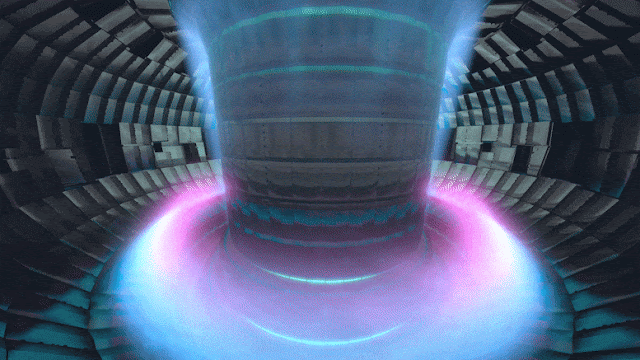ITER - International logo.
July 29, 2020
It is in Saint-Paul-lès-Durance (Bouches-du-Rhône), near Aix en Provence, in the south of France, that scientists around the world soon hope to give birth to the most powerful never made in the world.
Its objective: to reproduce the hydrogen fusion reactions that occur in the heart of the Sun and the stars. A process different from nuclear called fission as we know it today.
World's largest nuclear fusion project being assembled in France
The expected result: a new source of energy in abundance, alternative to fossil fuels, which does not emit CO2. At the time of the fight against global warming, the idea is dreaming.
And an unprecedented fact: the international project, launched by a 2006 treaty, brings together more than 30 countries participating in the research program, hosted by France: the 27 countries of the European Union, which provide 45% of the funding for the program, but also India, Japan, South Korea, China, Russia and the United States, which together contribute 9%.
The countries mainly supply parts of the machine, particularly large, which have gradually been delivered in recent months. Now the assembly phase can begin. The kickoff was given on Tuesday, in the presence of state representatives.
"Iter renews with this spirit of discovery and ambition". Emmanuel Macron.
French President Emmanuel Macron sent them a pre-recorded message by videoconference. "With fusion, nuclear can be a promise for the future" by offering us "non-polluting, carbon-free, safe and virtually waste-free energy," said President Emmanuel Macron.
ITER cutaway & description
"At the start, we always think that the obstacles will be stronger than the will to do and to move forward. And Iter renews with this spirit of discovery and ambition", also underlined the French president.
South Korean head of state Moon Jae-In also hailed in a video message "the greatest science project in the history of mankind" and this "shared dream of creating clean and safe energy from here. to 2050 ".
Safer and greener?
If the realization of the project is not for now, the leaders of the project put forward the advantages, such as the lower risk of nuclear accident and the absence of production of long-lived high-level waste, like this is the case with nuclear today.
"With us, the fuel is not radioactive, the waste is not radioactive," said Akko Maas, a physicist who participates in the program. "But the process being nuclear, the machine becomes radioactive. Nevertheless, it is a process that can be managed because the level of radioactivity is low or medium."
Another advantage: the fuels necessary for this fusion, extracted from water and lithium, would according to Iter be sufficient to "ensure the supply of a fleet of reactors for millions of years, a gram of fuel releasing as many energy than eight tons of oil ".
While the objective is to reduce the share of fossil fuels and to save energy, the fusion reactor will also meet needs in the future, which will remain important, as emphasized by Bernard Bigot, CEO of Iter.
Animation of the ITER nuclear reactor fusion plasma
"Renewable energies have limits: the intermittency, and the diffuse nature of the collection of this energy. Whatever progress has been made in energy storage, in energy saving, and with a population of soon 10 billion inhabitants, we need a suitable supplement ", underlines Bernard Bigot.
Iter, if connected to the electricity grid, would produce only 200 MW of electricity, enough to power some 200,000 homes. Future fusion reactors would have a volume of plasma to supply two million homes. The construction cost and the operational cost would be "equivalent to those of a conventional nuclear reactor", according to Bernard Bigot.
But we will have to be patient. Because the titanic international project, which already costs 20 billion euros, has seen its budget tripled. And the delay has been taken. Iter could produce its first plasma at the end of 2025 or the beginning of 2026 and the reactor could reach its full power in 2035. It will be necessary to wait until at least 2040 to hope that this new source of energy will make it possible to supply the electricity network.
For more information about ITER, visit: https://www.iter.org/
Related article:
A simple fusion recipe
https://orbiterchspacenews.blogspot.com/2020/03/a-simple-fusion-recipe.html
Burning like the Sun
https://orbiterchspacenews.blogspot.com/2016/03/burning-like-sun.html
Images, Video, Text, Credits: AFP/Euronews/ITER/Orbiter.ch Aerospace/Roland Berga.
Best regards, Orbiter.ch



